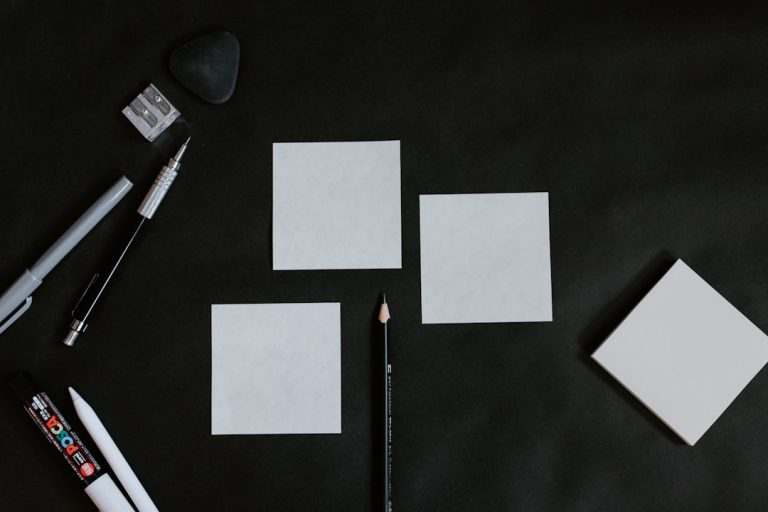My Experience with Time-blocking for Creative Projects
For years, my creative process felt like a wild, untamed beast. Inspiration would strike at unpredictable hours, followed by long stretches of self-doubt, procrastination, and the nagging guilt of unfinished projects. I’d cycle through bursts of frantic activity and periods of absolute stagnation, convinced that true creativity couldn’t be caged by a schedule. My desk was a graveyard of half-finished novels, abandoned canvases, and musical snippets that never found their harmony. Then, I stumbled upon time-blocking – a method I initially dismissed as too rigid, too corporate, too… anti-creative. Little did I know, this simple shift would become the scaffolding that allowed my most ambitious creative visions to finally take shape.
Wrestling with the Blank Canvas: My Creative Chaos Before Time-Blocking
Before time-blocking entered my life, my creative process was a beautiful, yet frustrating, mess. I was a firm believer in the “muse” – waiting for inspiration to strike, allowing my ideas to simmer organically, and generally resisting any form of structured planning. This approach, while romantic in theory, often led to profound anxiety and inconsistent output. I’d open my laptop with the best intentions to work on my novel, only to find myself lost in a rabbit hole of research articles, social media feeds, or even just staring blankly at the screen, paralyzed by the enormity of the task.
My days were a series of reactive decisions rather than proactive choices. A sudden idea might lead to an hour of intense sketching, immediately followed by hours of administrative tasks, email replies, or household chores, all while the creative spark slowly faded. The lack of boundaries meant that my creative work bled into every corner of my life, yet paradoxically, rarely felt truly *done*. Weekends often became catch-up sessions, further blurring the lines between work and rest. This constant state of low-level stress and fragmented focus was detrimental, not just to my productivity, but to my mental well-being and the very joy I found in creating.
The First Stroke: How I Began Sculpting My Creative Hours
The idea of time-blocking initially felt like a straightjacket for my free-spirited creative soul. How could I possibly schedule when inspiration would hit? Would forcing myself to write at 10 AM every day kill the spontaneity? Despite these reservations, the growing frustration with my lack of progress pushed me to try something, anything, different. I started small, almost reluctantly.
My first step was to acknowledge that creative work, while often seen as ethereal, still requires dedicated time and mental energy, just like any other task. I began by identifying my “golden hours” – those times of day when I naturally felt most alert, focused, and creatively charged. For me, this was typically early mornings, before the world woke up and emails started flooding in. I decided to block out a mere 90 minutes, three times a week, specifically for my novel. No emails, no social media, no “quick checks” of anything. This was my sacred creative time.
The initial resistance was strong. My mind would wander, I’d feel the urge to check my phone, or suddenly remember a pressing chore. But I stuck with it, using a simple timer and a strict “do not disturb” rule. I learned that even if the words didn’t flow immediately, showing up consistently was half the battle. Over time, those 90-minute blocks became less about forcing creativity and more about creating a container for it to emerge. It was an act of faith in the process, a promise to myself that this time was non-negotiable.

Finding My Rhythm: The Unexpected Flow in Structured Creativity
What surprised me most about time-blocking wasn’t just the increased output, but the profound shift in my mental state. The very structure I feared would stifle my creativity actually became its greatest liberator. Knowing exactly when my creative time was scheduled freed me from constantly thinking about *when* I would get to my projects. The mental overhead of juggling ideas and tasks diminished significantly.
During my dedicated blocks, I found myself entering a state of flow much more easily. With distractions minimized and the commitment made, my brain understood it was time to focus. Ideas that once felt elusive began to coalesce. Characters spoke more clearly, plot points emerged, and design elements harmonized. It wasn’t about forcing creativity, but about consistently providing the optimal conditions for it to flourish. This aligns perfectly with the principles of mastering deep work, where intense focus on a single task yields significant results.
I also discovered the power of “creative freedom within boundaries.” Instead of feeling restricted, the fixed blocks allowed me to be more daring and experimental. If a particular writing technique wasn’t working, I knew I had a dedicated time to try a different approach without feeling like I was “wasting” open-ended time. The clarity of the schedule also made it easier to say “no” to interruptions or less important tasks, protecting my creative sanctuary. This structure didn’t kill the muse; it gave her a reliable meeting place.
Navigating the Creative Storms: My Time-Blocking Fixes for Artist’s Block and Distraction
Of course, time-blocking isn’t a magic bullet that obliterates all creative challenges. There were still days when I’d sit down during my scheduled creative block, only to stare blankly at the screen, feeling utterly devoid of inspiration. Artist’s block, it turns out, doesn’t care about your calendar. However, time-blocking provided a framework to *manage* these storms rather than being swept away by them.
When inspiration felt absent, my strategy within the block evolved. Instead of panicking, I’d pivot to related, but less creatively demanding tasks. If I couldn’t write new content, I’d edit existing paragraphs, organize research notes, or brainstorm future plot points. Sometimes, simply switching from writing to outlining or from painting to sketching could reignite the spark. I also learned the value of short, intentional breaks within longer blocks, often using a modified Pomodoro Technique to refresh my focus.
Distraction remained a formidable foe. The digital world is a siren song for creatives. My solution involved physical separation and digital tools. My phone would go into another room, or at the very least, on airplane mode. I used website blockers for social media and news sites during my creative blocks. I also realized the importance of “transition time.” Before diving into a creative block, I’d take 5-10 minutes to clear my mind, perhaps with a short walk or by listening to instrumental music. This helped signal to my brain that it was time to switch gears and prepare for focused work, a key element in Tags:


